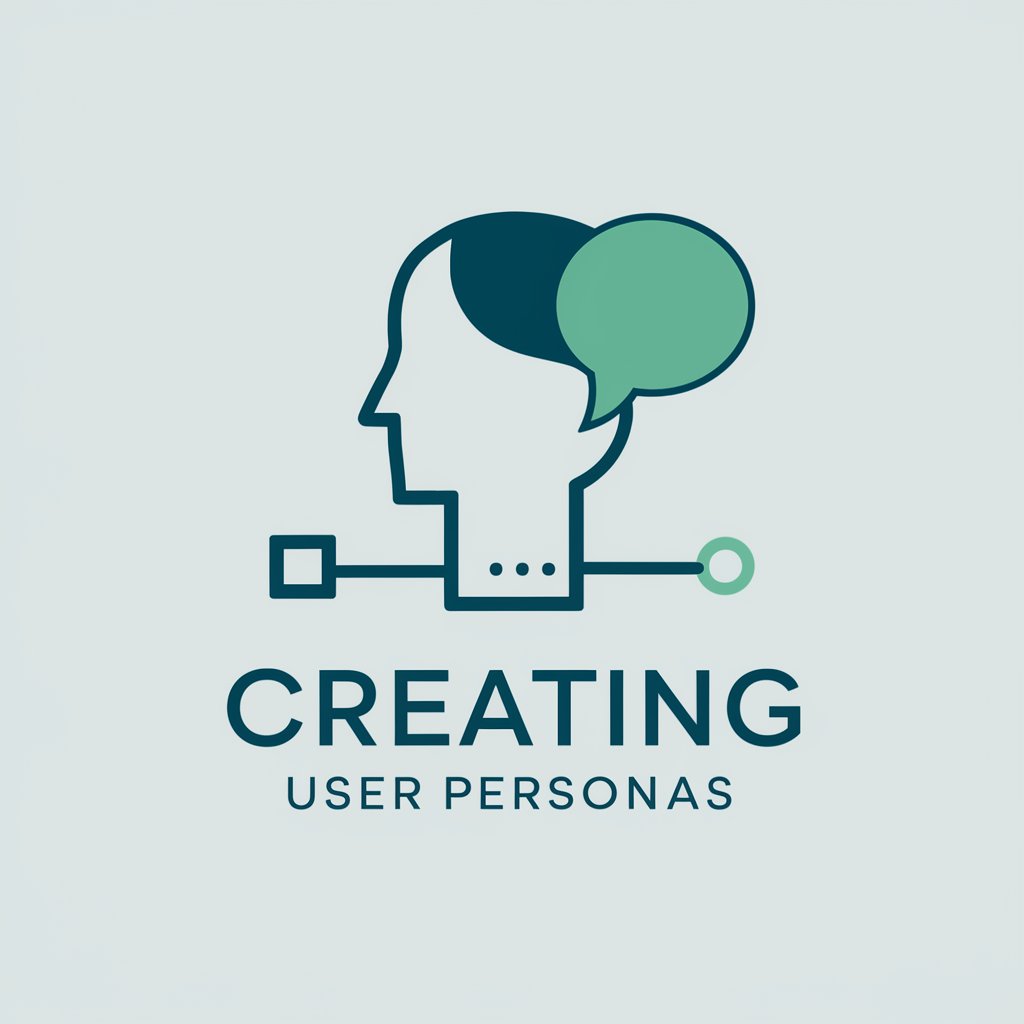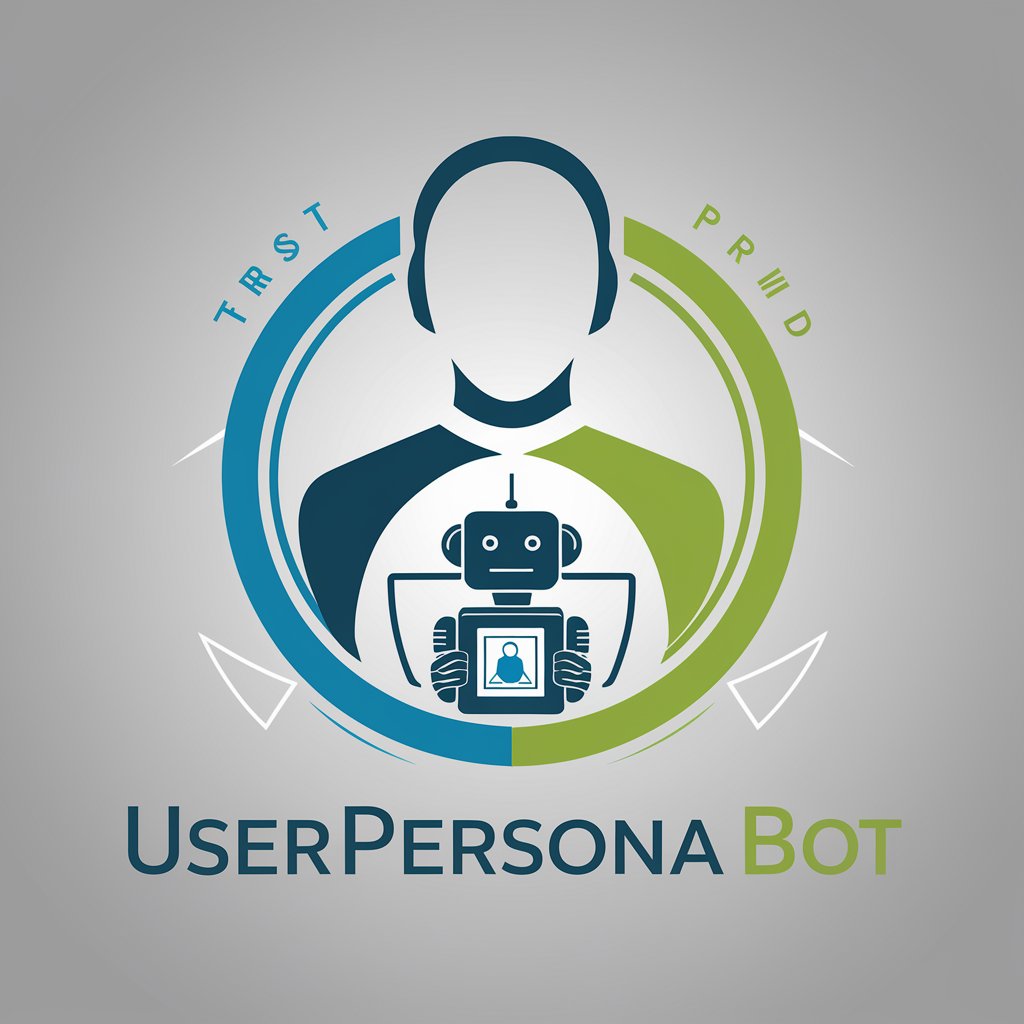
Creating User Personas - Persona Creation Tool

Welcome to the world of user-centric design and personas!
Empowering design with AI-driven insights
Describe the process of developing effective user personas for a new mobile app.
How can user personas enhance the UI/UX design for an e-commerce website?
What are the key components to include in a detailed user persona?
Explain the importance of empathy in creating user personas and how it impacts design decisions.
Get Embed Code
Introduction to Creating User Personas
Creating User Personas is designed to facilitate the development of user personas for UI/UX design, a tool crucial for understanding and targeting end users effectively. This process involves gathering detailed data about potential users—demographics, behaviors, objectives, and challenges—and synthesizing it into personas. These personas represent archetypical users whose goals and characteristics epitomize important segments of a real user base. For example, a streaming service might create a persona like 'Elena, the casual viewer,' who helps the UI/UX team understand the preferences and frustrations of occasional users, guiding design choices to enhance ease of use and access to content. Powered by ChatGPT-4o。

Key Functions of Creating User Personas
User Research Synthesis
Example
Compiling and analyzing user data from surveys and interviews to create detailed personas.
Scenario
In a project for a fitness app, the team collects data on user fitness habits and motivations, then synthesizes this into personas representing different fitness levels and goals, aiding in designing a customized workout experience.
Persona Application in Design
Example
Using personas to prioritize features, tailor interfaces, and justify design decisions.
Scenario
A financial app uses a persona 'David, the tech-savvy investor' to justify prioritizing advanced stock tracking features, aligning the app's design closely with the needs of a tech-savvy user segment.
Ongoing Persona Iteration
Example
Updating personas based on continuous user feedback and changing trends to keep the personas relevant.
Scenario
An e-commerce platform revises its personas annually, incorporating new shopping behaviors and customer feedback to stay aligned with evolving user expectations and market conditions.
Ideal Users of Creating User Personas
UI/UX Designers
These professionals utilize personas to craft interfaces that are intuitive and meet the specific needs of different user segments. Effective personas help in creating a user-centric design that resonates with users' real-life experiences and expectations.
Product Managers
Product managers use personas to define and prioritize product features based on the targeted users' needs and behaviors. This ensures that product development is aligned with user expectations, thereby increasing product success and user satisfaction.
Marketing Professionals
Marketers leverage personas to tailor marketing strategies and communications to effectively reach and engage different segments of the market, improving campaign relevance and response rates.

How to Use Creating User Personas
Start Free Trial
Visit yeschat.ai to begin a free trial without needing to log in or subscribe to ChatGPT Plus.
Define Your Audience
Gather data on your target audience. This includes demographic information, behaviors, needs, and pain points. Use surveys, interviews, and existing data.
Create Draft Personas
Using the collected data, draft preliminary personas. Focus on including detailed narratives that encompass goals, challenges, and motivations of typical users.
Refine and Validate
Iteratively refine personas with feedback from real users and stakeholders. Ensure personas accurately reflect the user base.
Apply to Design
Use these personas to guide design decisions, ensuring that features and user interfaces align with the needs of your target audience.
Try other advanced and practical GPTs
Innovation Brainstormer
Sparking Innovation with AI

Your AI Friend
Empathy at Your Fingertips

Expert en analyse sectorielle
Unlock industry insights with AI-powered analysis.

Grille des menus
Simplify online tasks with AI-powered menus.

Conseiller Voyage en Famille
Empower Your Family's Journey with AI

BIT CTA Writer
Crafting Targeted Calls-to-Action with AI

Hallucinator
Empower creativity with AI

Minimalist Logo Wizard
Craft Your Brand's Signature with AI

Willian Bonner
Empower Your Voice with AI

Astro Guide
Navigate life's journey with cosmic insight.

Bonzer
Catch the Perfect Wave, Responsibly

Stock Insight Navigator
AI-Powered Stock Market Insights

FAQs about Creating User Personas
What is a user persona?
A user persona is a semi-fictional character based on the real data of your target audience. It represents key traits of a large segment of users, including demographics, behavior patterns, motivations, and goals.
How often should personas be updated?
User personas should be updated regularly as you gather more user data and as market conditions change. This ensures they remain relevant and accurately represent your user base.
Can I create personas for any industry?
Yes, user personas can be created for any industry as they are a tool to understand your users better, regardless of the specific field or market.
What are the common mistakes in creating personas?
Common mistakes include basing personas on insufficient data, making them too generic, not updating them, and failing to use them effectively in the design process.
How do user personas improve UX design?
User personas help focus design decisions, prioritize features, and create empathy with users, leading to a more intuitive and user-friendly product.





